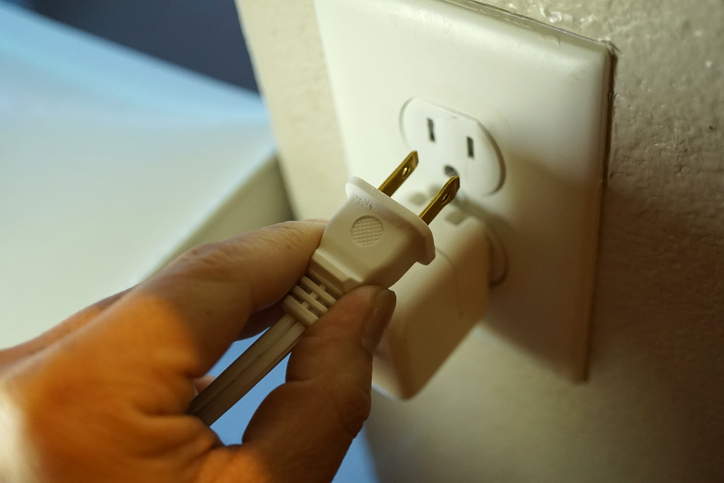
When you plug a lamp or an appliance into a socket, you expect to be able to turn it on. Sometimes, though, you’ll find that the outlet is “dead.”
Before you call an electrician, check a few things out:
- Plug something different into the same outlet. It could be that the problem is with the device and not the outlet. If this one turns on, that’s the case.
- If more than one device is plugged into the same outlet — or if a power strip full of plugs is plugged in there, notice if everything else is working. If not, try this: Unplug one device at a time until something turns on. It could be that you’ve overloaded the outlet.
- If nothing is turning on at that outlet, check your circuit breaker. This is usually located in the garage, basement, laundry room or a closet. Open the door and notice if a single switch is turned off; if so, turn it back on. If you can’t locate the circuit that belongs to that outlet, turn all of the breakers off and then turn them back on one at a time.
- If you plug the lamp back into the outlet and the circuit trips again, it’s time to call an electrician.
- And if your “dead” outlet is a GFCI outlet, you might be able to solve the problem simply by pressing the “reset” button on the face of the outlet.
What’s that smell?
The next time you think you can smell a dead mouse in the house but can’t find one, check your electrical outlets.
Overheated, damaged or exposed wires literally can start to smoke and burn inside your wall. So can a dead mouse — or anything from loose insulation to debris of any kind — if it gets trapped in the box behind the outlet.
The dead-animal smell — or a smell like burning rubber — is a warning sign, so don’t ignore it.
Instead, inspect every outlet in the house until you locate the one that smells. Unplug everything from the outlet; the plug will probably be hot.
Then, call a licensed electrician to diagnose the problem and repair the outlet.
Three ways to prevent electrical fires
Three of the most common causes of electrical fires in the home are 100 percent preventable.
More than 1,300 die or are injured in the 26,000 house fires caused by electricity mishaps every year, the U.S. Fire Administration estimates. Here’s how to rid your home of the most common culprits:
Extension cords. These handy wire-stretchers are not designed for continuous use. They’re made to solve temporary problems.
Too many homeowners use extension cords year-round, and that can cause them to overheat. An overheated cord is a fire hazard.
Solution: If you don’t have enough outlets, or if your heart is set on locating a lamp out of reach, have an electrician install additional outlets, including one closer to the lamp.
Old wiring and outlets. If your home is more than 20 years old and its electrical wires and outlets have never been updated, a hazard could lurk behind its walls.
Electrical standards have changed over the years as the experts have become more knowledgeable about electrical safety. And the electrical load in your home has grown as computers, phone chargers and mega-size TVs have moved in.
The electrical systems in older homes were designed to handle less activity. Overloading that system can trigger a fire.
Likewise, electrical components don’t last forever. If yours are deteriorating, it’s time to replace them.
Finally, older homes have few grounded outlets. All outlets in every room that has water or that gets wet — bathrooms, kitchens, basements, garages and laundry rooms, for instance — need ground-fault circuit interrupters. Adding them is a job for a professional electrician.
Overloaded outlets. Even if your home is new, you can overload its outlets.
Plugging too many appliances, lamps and electronics into a single outlet can overheat the wires and the outlets. That can lead to a fire. If your circuits are tripping often, that’s a sure sign that something’s wrong. Call in a pro.



